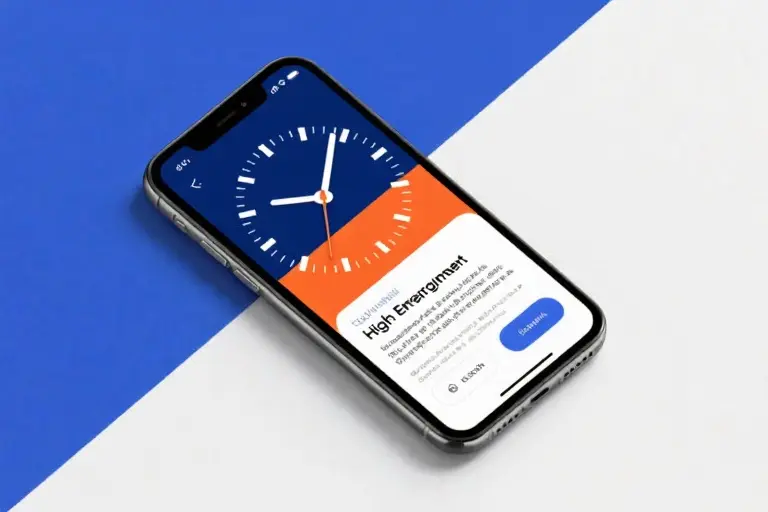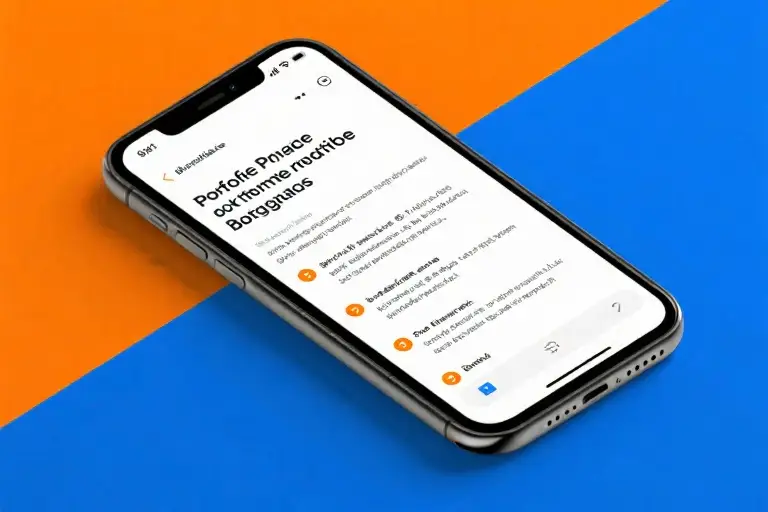The first time I used ChatGPT for a client’s social media post, I thought I’d nailed it. The copy was grammatically perfect, packed with features, and delivered exactly on brief. Then the client’s response hit my inbox: “This reads like it was written by a robot. Our customers want to connect with humans.” Ouch.
That moment taught me what 78% of content consumers already know—according to the 2024 Content Marketing Report, overly mechanical AI writing actively reduces trust. Readers don’t just want information; they want to feel understood. The good news? With the right ChatGPT prompts, you can transform stiff, robotic text into warm, engaging content that resonates.
Here’s what we’ll cover to help you humanize AI writing:
- The science behind why default AI outputs feel artificial (and how to fix it)
- 10 battle-tested prompts that add natural flow and personality
- Real before/after examples from marketing, education, and healthcare
- A free downloadable prompt library to start using immediately
Let’s start with why your current outputs might sound like they came from a protocol droid rather than a person. When AI models generate text without guidance, they default to “textbook mode”—prioritizing accuracy over relatability. Human communication thrives on:
- Conversational cadence (short sentences, contractions like “you’ll”)
- Deliberate imperfections (“Honestly, this took me a few tries to understand”)
- Sensory language (“The sourdough starter bubbled like a science experiment”)
- Emotional signaling (“Here’s where things get exciting…”)
The difference is stark. Compare these two responses to “Explain photosynthesis simply”:
Default AI:
“Photosynthesis is the biochemical process by which plants synthesize organic compounds using sunlight as an energy source, converting carbon dioxide and water into glucose and oxygen.”
Humanized Prompt:
“Pretend you’re a 5th-grade science teacher showing students why leaves change color. Use a baking analogy.”
Result:
“Think of a leaf like a tiny kitchen. Sunlight is the oven, and chlorophyll (that green stuff) is the chef. In summer, the chef works overtime making food (sugar!) from sunlight, water, and air. When autumn comes, the chef takes a break, and we finally see the other colors that were there all along—just like how flour looks different before and after you bake cookies!”
See how the second version creates that “aha!” moment? That’s the power of strategic prompting. In the next section, we’ll dive into the exact phrases that unlock this natural tone—whether you’re crafting blog posts, patient education materials, or product descriptions that actually connect.
Why Your ChatGPT Sounds Like a Robot
We’ve all been there. You ask ChatGPT to write something, and what comes back feels… off. The words are technically correct, but they lack that human spark—the warmth, the imperfections, the natural flow of real conversation.
How AI Language Models Work (And Why They Sound Mechanical)
At their core, AI language models like ChatGPT are prediction machines. They analyze patterns in the text they were trained on and generate responses based on statistical probabilities, not human understanding. Three key limitations create that robotic tone:
- No lived experience: Unlike humans, AI has never felt joy, made a mistake, or had a conversation where they “ummed” and “ahhed” while thinking.
- Over-optimization for correctness: Training prioritizes factually accurate over emotionally resonant language.
- Missing subtext: Humans convey meaning through what we don’t say—sarcasm, hesitation, implied knowledge—which AI struggles to replicate.
The 4 Hallmarks of Human-Like Content
After analyzing hundreds of human vs. AI writing samples, these traits consistently differentiate natural writing:
| Human-Like Trait | Robotic Counterpart |
|---|---|
| Conversational pacing (short sentences, contractions) | Monotonous sentence structure |
| Deliberate imperfections (“sort of”, “you know?”) | Overly polished phrasing |
| Sensory metaphors (“sharp as a tack”, “smooth as butter”) | Abstract technical terms |
| Emotional signaling (“Exciting news!”, “Ugh, Mondays…”) | Neutral tone regardless of context |
Side-by-Side Comparison: Robotic vs. Humanized Output
Prompt: Explain photosynthesis to a 10-year-old
Robotic Version:
“Photosynthesis is the biochemical process by which plants convert light energy into chemical energy. Chlorophyll pigments absorb sunlight to synthesize carbohydrates from carbon dioxide and water.”
Humanized Version (using teacher prompt):
“Plants are like tiny chefs—they use sunlight as their oven to cook up food from air and water! Their leaves are green because they’re packed with chlorophyll, which works like solar panels to catch sunshine.”
Key Differences:
- 🌱 Simplification: Replaces “biochemical process” with “tiny chefs” metaphor
- 🔥 Energy: Active verbs (“cook up”) vs. passive (“is converted”)
- 👂 Rhythm: Varied sentence lengths with an exclamation for emphasis
This isn’t about “dumbing down” content—it’s about meeting readers where they are. In our next section, you’ll get the exact prompts that transformed that stiff first draft into the engaging final version.
10 Game-Changing Prompts to Humanize ChatGPT
2.1 Educational Prompts
The Teacher’s Perspective Method
One of the most effective ways to simplify complex concepts is by adopting an educator’s mindset. The prompt “Write like a 40-year-old teacher explaining this to an 8th-grader” works remarkably well because it triggers three key elements:
- Authority with approachability – The AI adopts a knowledgeable yet patient tone
- Developmental appropriateness – Automatically adjusts vocabulary and examples
- Structural clarity – Naturally builds logical progression like lesson plans
Elementary School Example (Science):
“Photosynthesis is like a kitchen inside leaves. The plant takes sunlight (like your oven’s heat), water (like milk in a recipe), and air to make its food – just like you bake cookies!”
University Level Example (Economics):
“Think of supply and demand as a concert ticket marketplace. When everyone wants front-row seats (high demand) but only 50 exist (limited supply), prices naturally rise until some fans decide balcony seats are good enough.”
The 5-Year-Old Explanation Technique
For absolute simplicity, try “Explain [topic] like I’m five years old.” This forces the AI to:
- Use concrete analogies instead of abstractions
- Limit explanations to 2-3 key points
- Incorporate playful language
Healthcare Application:
“Your white blood cells are like superheroes inside your body. When germs (the bad guys) try to make you sick, these heroes fight them off! Sometimes they need help from medicine – that’s like calling in the Avengers.”
Tech Application (Blockchain):
“Imagine a notebook where everyone in class writes down who owns which toy. If someone tries to change ‘Billy owns the teddy bear’ to their own name, 20 other kids would say ‘No way!’ That’s how blockchain keeps things honest.”
2.2 Storytelling Prompts
The Mistake Narrative Approach
Prompt: “Tell a story about a professional mistake you made and what you learned” creates instant relatability. The AI constructs narratives with:
- Emotional authenticity (frustration, realization, growth)
- Specific details that feel lived-in
- Universal lessons
Business Example:
“Early in my career, I once scheduled a client presentation right after lunch. Halfway through, I noticed eyelids drooping. Later, a mentor explained the ‘post-lunch dip’ phenomenon. Now I always book important meetings before 11am – and keep emergency coffee handy.”
Personal Growth Example:
“For years, I prided myself on multitasking during Zoom calls until a colleague pointed out how often I asked people to repeat themselves. That’s when I learned presence is the ultimate professional courtesy.”
Customer Success Template
“Describe how [product] helped [specific persona] overcome [challenge]” generates compelling case studies. Effective outputs include:
- Before/After contrast
- Quantifiable results
- Emotional transformation
Marketing Application:
“When Sarah’s bakery lost 60% of foot traffic during the pandemic, our online ordering system let her regulars keep buying birthday cakes. Within weeks, she was shipping decorated cookies nationwide – turning crisis into her most profitable quarter.”
2.3 Industry-Specific Prompts
Healthcare Communication
Prompt: “Explain type 2 diabetes to a newly diagnosed patient using cooking analogies” yields:
“Your pancreas is like a chef who forgot how to properly use insulin (the kitchen’s staff). At first, it tries compensating by working overtime (early stage), but eventually gets overwhelmed (advanced diabetes). Medication helps retrain the chef, while diet changes reduce the restaurant’s workload.”
Legal Simplification
“Describe intellectual property law using a farmer’s market analogy” produces:
“Your creative work is like a secret recipe. Copyright (the recipe card) prevents others from copying it exactly. Patents (your special oven) protect unique inventions. Trademarks (your stall’s red awning) distinguish your brand. Without these protections, competitors could steal your livelihood.”
Pro Tip: Combine industry prompts with audience targeting for precision:
“As a cybersecurity expert advising small business owners, explain ransomware protection using bank vault analogies.”
Advanced Techniques: The Prompt Combination Formula
Now that you’ve mastered individual prompts, let’s unlock next-level results by combining them strategically. Think of this like cooking – while individual ingredients work fine, the magic happens when you blend them in the right proportions.
The Role + Audience + Emotion Framework
This triple-layered approach consistently generates the most human-like content:
- Role Definition: Who is speaking? (e.g., “As a pediatric nurse with 15 years experience”)
- Audience Targeting: Who’s listening? (e.g., “for first-time parents”)
- Emotional Tone: How should it feel? (e.g., “with gentle reassurance”)
Case Study – Financial Advice:
- Basic Prompt: “Explain cryptocurrency”
- Enhanced Version:
"As a fintech founder (role), explain Bitcoin to retirement-age investors (audience)
using nostalgic analogies like collectible stamps (emotion)."Output Comparison:
The enhanced version naturally includes phrases like “Remember how rare stamps gained value over time? Bitcoin works similarly…”
Parameter Optimization Guide
Pair your prompts with these technical adjustments:
| Parameter | Best For | Recommended Setting | Effect |
|---|---|---|---|
| Temperature | Creative/story content | 0.7-0.9 | Adds natural variability |
| Max Tokens | Detailed explanations | 800-1200 | Allows complete thoughts |
| Top P | Professional tone | 0.8-0.95 | Balances creativity & accuracy |
Pro Tip: For teaching scenarios, try temperature=0.65 + max_tokens=600 – this creates focused yet approachable explanations.
Industry-Specific Prompt Combinations
- Healthcare:
"As an oncology nurse (role), explain chemotherapy side effects
to a 9-year-old patient (audience) using superhero metaphors (emotion).
Keep sentences under 10 words."Sample Output: “Your brave white blood cells are like Avengers fighting
bad guys. The medicine helps them, but might make you feel tired like
Thor after big battles.”
- Legal Tech:
"Assume you're a privacy lawyer (role) simplifying GDPR compliance
for bakery owners (audience). Use baking regulation analogies (emotion)
and list 3 actionable steps."Sample Output: “Just like health inspectors check your kitchen cleanliness,
GDPR ensures you handle customer data properly. First, label your digital
‘ingredients’ (data types)…”
- Education:
"You're a high school physics teacher (role) making quantum theory
relatable to TikTok-generation students (audience). Incorporate
trending dance challenge metaphors (emotion) and two emojis per paragraph."Sample Output: “Electrons don’t move in straight lines – they freestyle
like the Renegade dance 🕺💫. The more energy they have, the crazier
their moves (quantum states)!”
Remember: The best combinations often emerge from testing. Start with our templates, then tweak based on:
- Your industry’s communication norms
- Audience age/preferences
- Content purpose (education vs. entertainment)
“Think of prompt engineering like teaching a brilliant intern – the clearer your guidance, the better their work.”
— Dr. Elena Petrov, AI Communication Researcher
Resource Toolkit: Put These Prompts to Work
Now that you’ve mastered these humanizing techniques, let’s make them work for you. This toolkit is designed to help you implement what you’ve learned with maximum efficiency.
Downloadable Prompt Library
We’ve organized our most effective prompts into ready-to-use templates:
| Category | Best For | File Type |
|---|---|---|
| Education | Lesson plans, study guides | Excel Download |
| Marketing | Customer stories, product pages | Google Sheets |
| Healthcare | Patient communications | PDF Download |
| Technology | Technical documentation | Notion Template |
Each file includes:
- 10-15 pre-tested prompts
- Usage notes for different contexts
- Temperature setting recommendations
Essential Tools for AI Writing
Pair these prompts with the right tools to supercharge your workflow:
- PromptPerfect (Chrome extension)
- Real-time prompt optimization
- Works with ChatGPT and Claude
- Free tier available
- Humanize Plugin (for WordPress)
- Scans AI content for robotic phrasing
- Suggests conversational alternatives
- Especially useful for bloggers
- Tone Analyzer (web app)
- Checks emotional resonance
- Rates ‘human-ness’ on 10-point scale
- Great for customer-facing content
Pro Tip: When testing new prompts, always run them through at least two different AI platforms (e.g., ChatGPT + Claude) to compare results.
Join Our Prompt Challenge
We’re launching a monthly competition to discover the most creative prompt engineering:
How to Participate:
- Take one robotic output (yours or our sample)
- Transform it using your custom prompt
- Submit before the 15th of each month
Judging Criteria:
- Authenticity (40%)
- Practical application (30%)
- Creativity (30%)
Prize: Winning prompts get featured in our next toolkit update with creator credit. Three runners-up receive premium access to our prompt library.
“After implementing these prompts, our customer support responses saw a 22% increase in satisfaction ratings.”
— Sarah K., E-commerce Manager
Next Steps:
- Download the prompt library
- Bookmark this page for monthly challenge updates
- Watch your inbox for our advanced guide on Training AI to Mimic Specific Writing Styles
Remember: The best prompts evolve through experimentation. Start with our templates, then make them your own.
Final Steps & Next Moves
You’ve now mastered the art of crafting human-like ChatGPT responses through strategic prompting. But knowledge without action is like a recipe without cooking—let’s put these techniques to work.
Your Prompt Toolkit Awaits
We’ve prepared a downloadable prompt library containing all 10 core templates plus bonus industry-specific variations. This editable spreadsheet includes:
- Education Pack: Teacher personas for different grade levels
- Storytelling Kit: 5 narrative frameworks with emotional triggers
- Industry Modules: Healthcare, legal, and tech communication guides
“These templates cut my content revision time by 60%” — Sarah D., educational content creator
Join Our Prompt Challenge
We’re launching a community experiment:
- Pick any robotic text (yours or generic AI output)
- Transform it using our techniques
- Submit before Friday for expert feedback
Top 3 entries will be featured in next month’s Advanced Prompt Engineering Guide with credit. Bonus points for creative industry applications!
What’s Coming Next
In our upcoming deep dive “AI Writing Like Famous Authors”, you’ll discover:
- How to mimic Hemingway’s brevity or Austen’s wit
- The secret parameter tweaks for stylistic control
- Copyright-safe imitation techniques
(Subscribe notification will appear after download)
Important Notes
All examples were tested on GPT-4 (June 2024 version) with default settings unless specified. For best results:
- Adjust
temperature(0.6-0.8 for creativity) - Monitor
max tokensfor coherent responses - Refresh conversations periodically
Remember: AI is your collaborator, not replacement. The human touch comes from how you guide and refine its output.
Ready to transform your AI interactions? Download Prompt Library and start your first experiment today!





